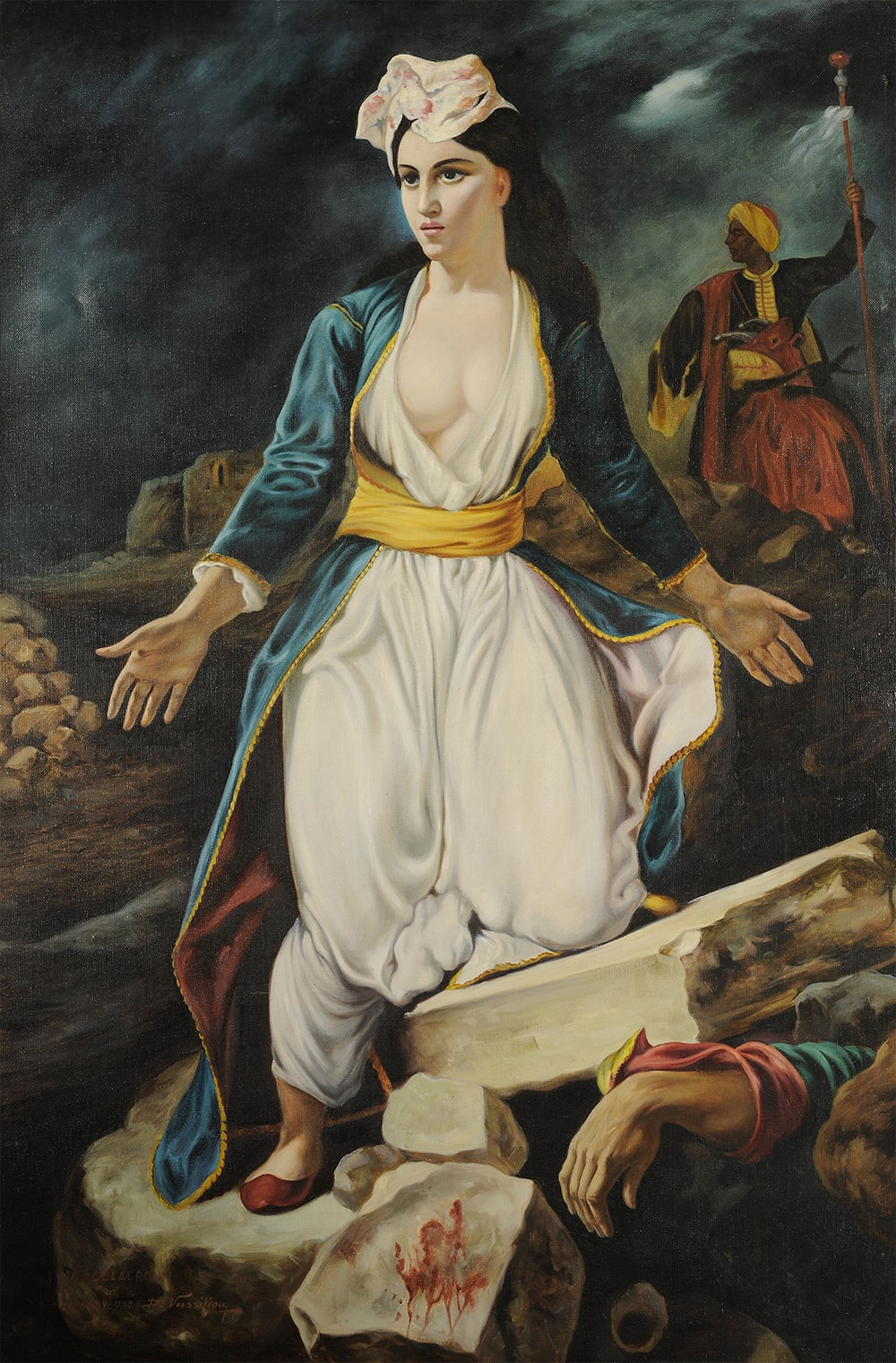The exhibition ΕΠΑΝΑCYΣΤΑΣΗ ’21 THESSALONIKI takes place at the Teloglion Foundation of Art – Aristotle University of Thessaloniki (AUTh) with the cooperation of the Foundation, the AUTh Library and Information Centre as well as the Aristotle University of Thessaloniki. It follows the structure and rationale of the central anniversary exhibition, attempting a multiple approach to the Greek War of Independence through thematic sections. The tiles from which the Greek state emerged are illuminated: the international scene of the time, the peculiarities of the place, the diverse origins of the protagonists, the sacrifices and politics, the conditions of life and war, the supporters and the opponents, the impact, the consequences and the memory of the Struggle, with reference to the aftermath of the struggles of those who remained outside the first borders.
The exhibition presents, among others, the following:
- Pre-revolutionary paintings, such as watercolor paintings by Gerasimos Pitsamanos and portraits of Ioannis Kapodistrias and the ruler of Wallachia Ioannis Karatzas
- The protagonists, prominent or lesser known, through their portraits and weapons or documents with their signature
- Painting (ink on paper) depicting the death of Markos Botsaris created just one year after his death
- The “Fall of Constantinople” from the series of Makrygiannis – Zografos
- Documents such as revolutionary proclamations of Ypsilantis or a letter from a member (Filikos) of the Society of Friends (Filiki Eteria) who participated in the movement in the Danube Hegemony and describes the atmosphere with the proclamation of the Revolution in Iaşi
- Weapons such as the sword of the member (Filikos) of the Society of Friends (Filiki Eteria) K. Farmakis, who fought in Moldavia, the pistol of Athanasios Diakos, the kariofili shotgun of Kolokotronis and the yatagan of Karaiskakis
- The figurehead of the ship ‘Aris’ and the signal of Admiral Andreas Miaoulis
- The tambouras of Makrygiannis
- Objects of daily use and decorations of philhellenic art, including playing cards printed in Hungary with figures of fighters
- Official portraits of Rigas and Ypsilantis, orders of the Ministry of Military Affairs created by Dionysios Tsokos in the 1860s, as well as other newer paintings.
Special reference to the Revolution in Macedonia is made with objects such as:
- the encrypted logistics of the member of the Society of Friends (‘Filikos’) and pioneer of the Revolution Emmanuil Papas from Serres
- a letter from Ypsilantis in which he introduces Georgios Lassanis from Kozani to the registrars of the Society of Friends (Filiki Eteria) in Iaşi
- description of the rigging of the ship of Antonis Visvizis from Ainos of Thrace who participated in the uprising in Halkidiki
- document of Papas to Spetses with which he refers to the first successes of the Greeks in Macedonia and asks for ammunition, documents from Mount Athos asking for support, a letter from Tsamis Karatasos, as well as depictions of Emmanuil Papas and Tsamis Karatasos, etc.
Interactive exhibits complement the experiential experience of the visitor:
- “Pazari” (bazaar) presents the society and way of life in the multicultural Ottoman Empire
- “The Charter of Rigas” refers to the contribution of the Greek Diaspora to the intellectual development of Hellenism, to the work of Rigas, Korais and the other representatives of the Modern Greek Enlightenment. It thus answers the question of how a map can become a revolutionary mean.
- Wartime printing houses allow the visitor to browse the newspapers of the Revolution “Ellinika Chronica” (Hellenic Chronicles) and “Filos tou Nomou (Friend of the Law), emphasizing the contribution of the Press in the dissemination of the ideas and events of the Revolution, as well as the foreign press of the time.
The sound exhibit ‘Orkos tou Filikou’ (Oath of a member of the Society of Friends) conveys the atmosphere, the pulse and the devotion of those who were dedicated to the secret preparation of the Revolution. Finally, audiovisual media bring to life the paintings of Makrygiannis, the use and importance of the weapons of the fighters, the use of firearms, Medicine in the Struggle, the civil conflicts and the diplomatic developments up to the delineation of the first borders of the Greek state.
n the framework of

The interactive presentation of the Chart is implemented with the support

with the support of
![]()







